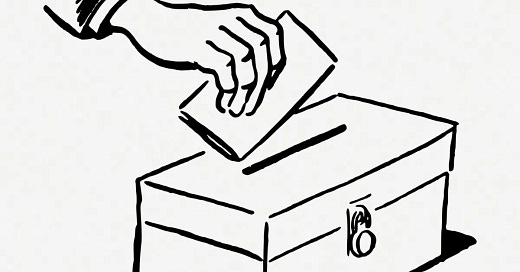Farage's Reform Party to take seats across South East London, new poll suggests.
Electoral Calculus model suggests Reform could take seats across Bexley, Bromley and Greenwich if an election were held today.
New polling by Electoral Calculus has projected a dramatic change in South East London's politics, with Reform UK forecast to win parliamentary seats in the region for the first time, if a general election were held today.
The data, which was published over the weekend, suggests that Reform could win 362 seats, up from five in 2024, overtaking both Labour (to win 136 seats down from 412) and the Conservatives (22 seats down from 121). Other parties, such as the Liberal Democrats are projected to take 52 seats, a slight predicted from their current 72.
Reform projected to sweep seats across South East London
Across Bexley, Bromley and Greenwich, the model shows multiple constituencies changing hands, primarily from the Conservatives and Labour to Reform UK. In Bromley, Reform is predicted to win both of the seats fully within the Borough:
Orpington, currently held by Gareth Bacon MP (Conservative)
Bromley and Biggin Hill, currently held by Peter Fortune MP (Conservative)
In addition, Beckenham and Penge (which crossed the Borough boundary), held by Labour’s Liam Conlon, is expected to remain with Labour.
Greenwich, however, has a more mixed picture. Erith and Thamesmead, and Greenwich and Whoolwich are both projected to stay Labour, held by Abena Oppong-Asare and Matthew Pennycook respectively. However, Eltham and Chislehurst, currently held by Labour’s Clive Efford, is predicted to swing to Reform.
Meanwhile, in Bexley, both parliamentary seats fully within the Borough boundary, are projected to be taken by Reform UK. These include:
Old Bexley and Sidcup, currently held by Louie French MP (Conservative)
Bexleyheath and Crayford, which Labour gained in 2024 under Daniel Francis
If these projections hold in a future election, it would mark a significant shift in the politics of the region, with Reform gaining support from voters in both Labour and Conservative areas.
A national swing reflected locally
Electoral Calculus’s modelling is based on current polling data, and a uniform national swing (which is when polling data is applied to each individual seat). While such models do not account for local factors (such as candidates, campaign strength or tactical voting), they offer a broad indication of how national trends may affect individual constituencies.
Reforms projected success would represent an unprecedented change to UK politics, with the party currently holding just five seats in Parliament, none of which are in London.
The model suggests that both main parties could face huge losses across the country. The Conservatives, already reduced in 2024, would be left with just 22 seats. Labour, despite having won a large majority in the most recent general election, is also forecast to lose more than two-thirds of its current MPs.
Local council elections could be the next test
Whilst there is no general election scheduled for several years, the next significant test of public opinion in our region, is expected to come at the 2026 local council elections.
Electoral Calculus’s polling also provides a breakdown of ward-by-ward level results, and shows Reform could be in place to challenge for control of Bexley Council (currently held by the Conservatives) and win multiple seats on Bromley Council.
Both councils have been dominated by the Conservative party in recent years, although Labour have made gains in both areas. A breakthrough by Reform would represent a significant breakthrough in suburban and outer-london areas.
South of the River contacted the local offices of several political parties mentioned in this report to request comment on the Electoral Calculus projections. None had responded by the time of publication.
Model limitations and voter considerations
It is important to note that projections like this are not 100 percent accurate, but models that attempt to simulate what would happen if current national polling was translated to local seats. They rely on assumptions about how different regions swing, and do not include data on local campaigns or the ‘personal brand’ of candidates.
That said, models such as Electoral Calculus are commonly used by political analysts, journalists, and parties themselves to track changes in public opinion.
As with all polls, these numbers could change as new data emerges, and the real outcome of any future general election will ultimately depend on the choices of voters in each constituency.
This article is based solely on the publicly available data from Electoral Calculus, published May 2025. For more information on the methodology used in the projection, visit electoralcalculus.co.uk.



